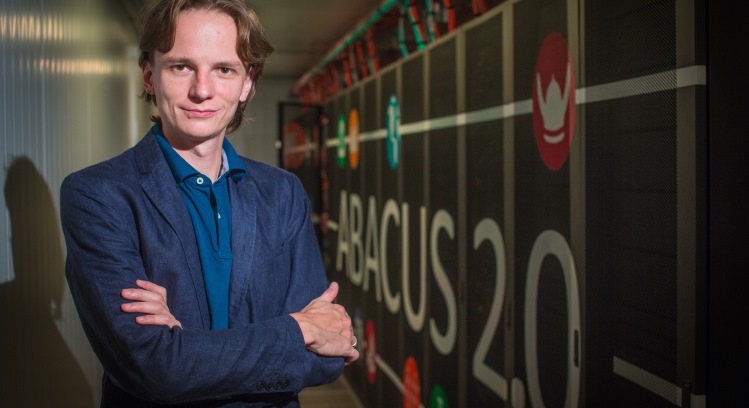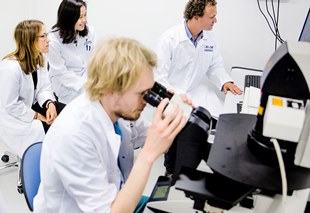
Ageing: Computer simulation finds dangerous molecule activity
All human organisms are attacked by free radicals – they destroy our cells, and over time they contribute to us ageing. Now, researchers have found out how a particularly dangerous type of free radicals is formed, and it may lead to a better understanding of ageing.
Every time we breathe we bring crucial oxygen into the body. However, a very small part of this oxygen may be converted to so-called free radicals, which have an unfailing ability to damage our cells. The older we become, the more our cells are damaged and thereby also our organs, muscles, etc.
Free radicals also have great significance concerning ageing and thus, understandably, attract great scientific interest.
Ilia Solov'yov and Peter Husen are two of the scientists who are trying to understand how free radicals form. Their interest is not only of the medical kind; they are just as much concerned with the opportunities that computer power holds concerning analysis of extremely complex biological systems – such as the formation of the special group of free radicals called superoxides.

Maybe prevent formation of free radicals
- We wanted to find out exactly which factors lead to the formation of these superoxides. We knew as much that the formation occurs in a cluster of proteins but the rest was a mystery. And of course it is interesting to find out the details, because it is only when we know them that we can hope to be able to control and perhaps even prevent the formation of superoxides, says Ilia Solov'yov who is an associate professor and head of the Quantum Biology and Computational Physics Group at SDU.
Together with postdoc Peter Husen from the same research group he fed the Danish super computer Abacus molecular biological data and asked it to make a simulation of what is going on inside the relevant cluster of proteins that leads to the formation of superoxides.
- The simulation showed us that an oxygen molecule can penetrate and reach specific locations in the cluster of proteins where, potentially, it can absorb an extra electron and thus turn into superoxide. This cannot be observed in a regular microscope and therefore this process has so far been unknown.
The scientists’ next step is to examine whether it is possible to prevent the oxygen molecule from entering the protein cluster and initiate the formation of the harmful superoxides.
Meet the researcher
Ilia Solov'yov is an associate professor at the SDU eScience Center, Department of Physics, Chemistry and Pharmacy. He is also head of the Quantum Biology and Computational Physics Group.
The microscope cannot keep up any longer

The microscope has led to several major scientific breakthroughs, but there is a limit to how much (or rather; how little) one can see in it. If one wants to study units as small as proteins and molecules, the method of choice today is via computer models in which one can build such things as virtual proteins and examine them on-screen. One can then study the function of the protein in detail through computer simulations.
Free radicals and antioxidants
Free radicals destroy our cells and cause DNA damage – unless they are neutralised by antioxidants. Health food stores sell various products that contain antioxidants, which is found in some vegetables and berries, but we also produce them ourselves. However, we can neither produce nor eat enough to stave off our ageing.